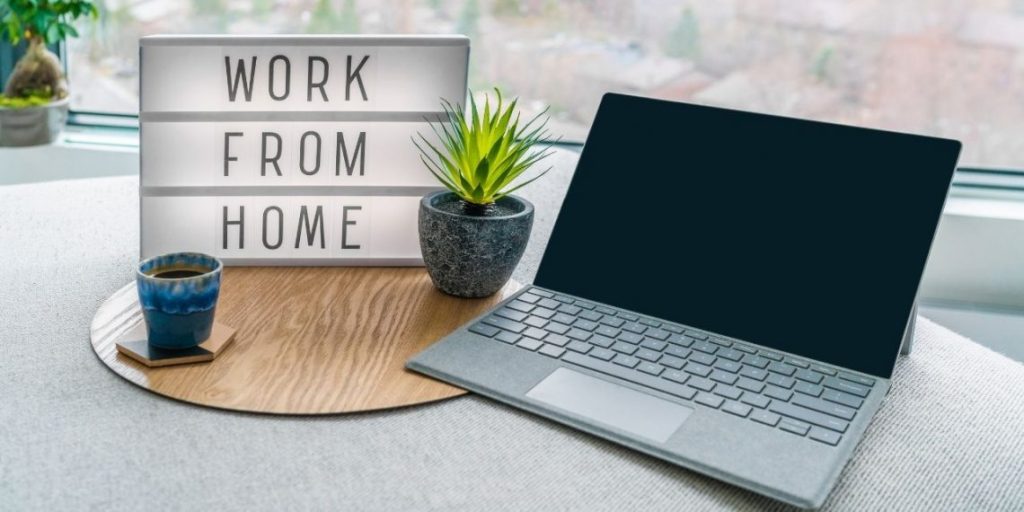The latest on all kinds of information, news, and resources that help you make working remotely better.
Top Work From Home Essentials For Small Business | Daniel Atkinson, Londondailypost.com
To ensure a productive work from home experience that helps in increasing revenue, here’s a list of some important elements that are necessary for small businesses to incorporate in their work lifestyle:
Remote Meeting Software:
Business owners and managers need effective means of conducting virtual meetings with employees to discuss work and collaborate on various assignments.
A remote meeting software not only allows you to host business discussions without any travel expenses, but also allows everyone to be on the same page about important work information.
Time tracking app:
To keep schedules organized, time tracking apps are an ideal way to understand how much time is being spent on a given activity. It not only helps you be more aware of your work progress but also highlights your low-productivity and high-productivity hours.
High speed internet connection:
A high speed internet connection is integral for connecting with clients, sharing important documents with colleagues and communicating work progress to managers.
A dedicated workstation:
To work efficiently, a distraction free zone with comfortable seating arrangements is a must. Business owners must provide employees an allowance to invest in a comfortable chair, an adjustable desk and a monitor.
A storage system:
Remote work requires an organized file storage space at home that will ensure you do not end up losing important documents. You can invest in a sturdy filing cabinet or utilize some furniture at home to store important documents.
Conclusion:
With the help of above-mentioned information, small businesses can build a productive work environment for successful results.
How to Motivate Fatigued and Stressed Employees in the New Year | Lisa Rabasca Roepe, Shrm.org
It’s been nearly a full year since employees started working from home or following COVID-19 protocols in the workplace.
Even if staff took some extra time off to unwind during the holidays, most employees probably haven’t returned to work with the renewed sense of purpose that is typically associated with starting a new year. Instead, the first quarter of 2021 will likely feel like more of the same – endless Zoom meetings, no clear end to the pandemic, and home and work lives thoroughly enmeshed.
Here are four ways managers can help motivate employees in 2021.
Have an honest, one-on-one conversation. Even though managers may have conducted a performance evaluation for work done in 2020, now is a good time to have a different type of one-on-one conversation with employees. “Rather than focusing on work, focus on their family, mental health and how they are doing personally,” Halpern said. Ask open-ended questions and, if they say everything is fine, encourage them to be honest by sharing your own concerns and challenges, Halpern said. “If you’re vulnerable and candid, they will respond in kind.”
The purpose is to understand each employee’s current state of mind and what he or she needs to succeed, said Kym Harris-Lee, an executive coach in Atlanta. Consider asking, “As you think about this new year, what are your goals, what do you want to accomplish, how can I help you?”
Encourage employees to think strategically. One lesson most managers learned from 2020 is that employees don’t appreciate back-to-back virtual meetings, because it doesn’t give them much time to think or get actual work done, Harris-Lee said.
She recommended that managers give employees permission to decline one to two meetings a week during the first quarter of 2021, provided they use the time they aren’t in a meeting to reflect on their work.
Create easy wins. Rather than setting long-term quarterly or mid-year goals, set monthly goals that focus on actions staff can control, Halpern said.
Be gentle with feedback. “For the first half of 2021, be selective and intentional with feedback,” Halpern said. “Focus on trends and patterns versus one incident. If you see someone [making a mistake] once, let it go.” Rather than giving an employee feedback on what she did wrong, suggest a way that you can help her succeed.
Time is money: 8 time management tips to help you work smarter | Fool.co.uk
To help you make the most of your workday, here are eight simple time management tips.
- Plan your day
Start the day with a clear idea of what you plan to achieve. Write a to-do list the night before so you can get started right away the next day. Set specific, measurable and realistic goals.
2. Turn off distractions
Don’t let messages distract you from the workday, even if you’re working from home.
3. Designate a workspace
Whether it’s the kitchen table or an office, it’s important to label a certain area as your workspace. Over time, your brain associates that space with work and mental focus, so it’s easier to concentrate and get work done.
4. Prioritise tasks
Prioritise tasks based on how important and urgent they are rather than how easy they are to achieve. For example, if something’s both important and urgent, make this the first job on your to-do list.
5. Set time limits
Set clear time limits for each task and stick to them. Otherwise, you could end up spending much longer on a job than is strictly necessary.
6. Track your time
Wonder where your time’s going during the workday? Start tracking it. Set a timer and check how long it takes you to complete specific tasks.
7. Know when you’re most productive
While some of us can be through multiple tasks first thing in the morning, others prefer burning the midnight oil. Don’t fight these natural tendencies – embrace them instead.
8. Take regular breaks
Whether you go for a (socially distanced) walk around your local park or curl up with a book, don’t forget to step away from your work from time to time. Regular breaks give your mind a chance to ‘recharge’.
Time management is crucial to feeling in control of your workday, whether you run your own business or you’re working from home right now. The best part? It’s something everyone can learn, and you can start right away.
Begin with small changes to your daily routine, build on the improvements you make, and find out what productivity hacks work best for you.
The basics of culture-building in a new hybrid workplace | Sonal Jain, Peoplematters.in
Reshaping culture in a partial or a completely hybrid workplace does not have to be a mammoth task. Keeping the workforce’s needs and lived experiences at the center of management decisions is the first step. Then come the four unassuming, but significant changes that leaders should make to ensure culture becomes a catalyst for success in the new normal –
Be intentional about communication – Create guidelines around how you communicate, how often you communicate and think about ways in which you can avoid the ‘Zoom fatigue’ from kicking in.
Keep traditions alive – Everything that once drove formal and informal culture in the physical workplace needs to be reformatted to ensure inclusivity and connection between the physical and virtual workforces. This includes team-building activities, wellness sessions, happy hours and milestone celebrations, that allow members of a team to preserve social attachments with each other.
Don’t forget D&I – Pivoting policies, ensuring equal access to technology for all employees, and digitizing the work of Employee Resource Groups are some ways in which companies can maintain a shared collaborative and cultural mindset even with a staggered workforce.
Get workplace culture right can be advantageous all around. The shared experience of adapting to the same extraordinary circumstances makes culture more important than ever. And thoughts can only translate to actions with constant reflection, deliberation and collaboration to thrive in this new reality.







